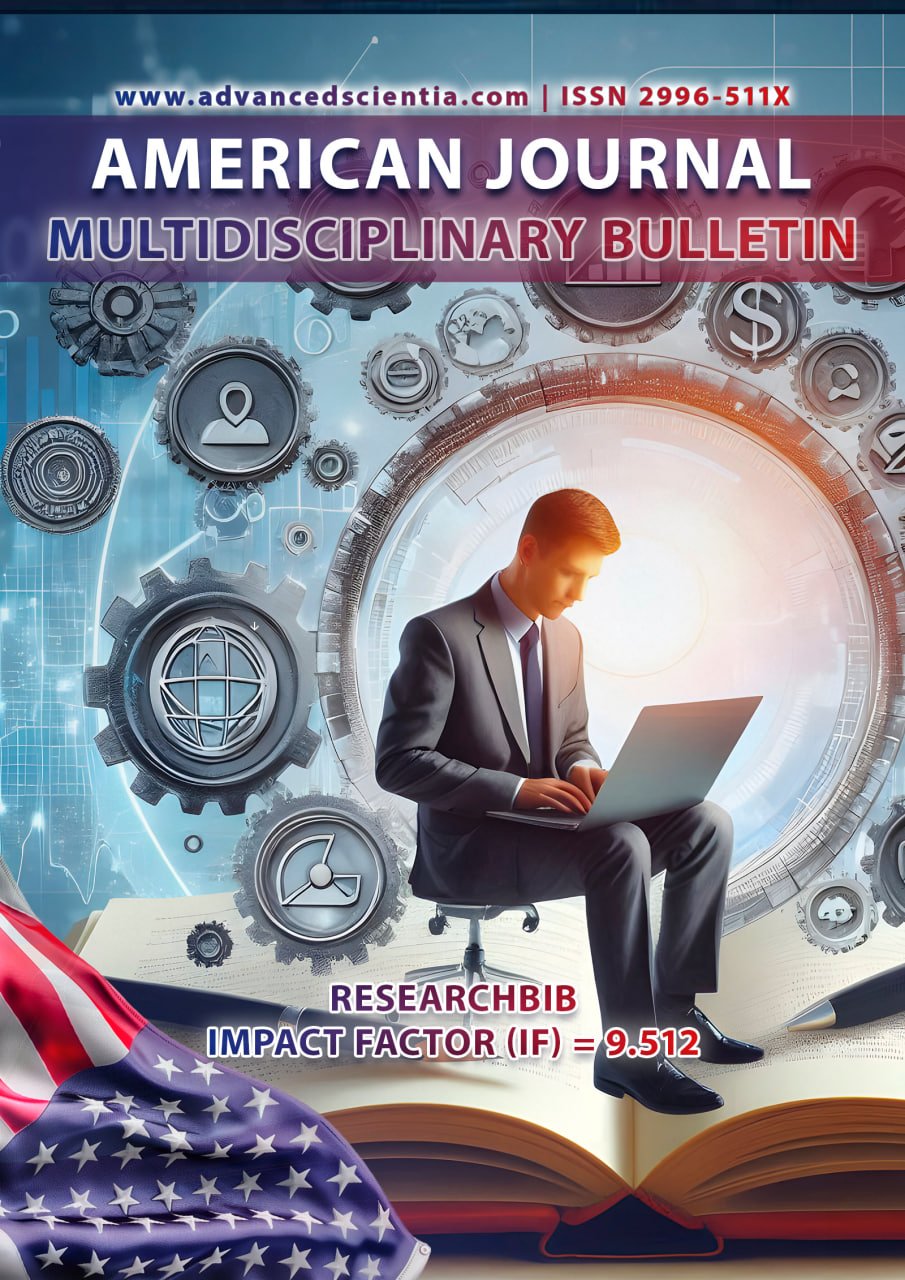HAKIM TIRMIDHI'S VIEWS ON TAFSIR AND TA’WIL
Abstract
There are some similarities and some contradictions between the concepts of tafsir and ta’wil. "Tafsir" means interpreting the verses of the Qur'an based on the narrations, that is, "ma’thur". As for the brief description of the tafsir, the tafsir is the explanation of the meaning of the verse. The term, on the other hand, refers to a complex science that combines a number of relevant sciences necessary for the correct interpretation of Qur'anic verses. Tafsir is divided into aqli (bil-ra’y) and naqli (bil-ma’thur) types. In this brief definition, one can understand the terminological meaning of the word tafsir as it is understood today. Tafsir can also be described as one’s understanding the purpose of the Qur'an at the level of his own mind and explaining it to others[1].
[1] Obidov R. Qur’on mavzularining ma’naviy-tarixiy ahamiyati. – Toshkent: TIU, 2009. – B. 64.
References
1. Kizi, G. I., & Ulikova, M. (2021). DESCRIPTION OF THE CONCEPT OF LOVE AND FAMILY RELATIONSHIP. Academic research in educational sciences, 2(10), 601-606.
2. Qizi, G. I. (2023). СONCEPTIVE PECULIARITIES OF TOURISM TERMINOLOGY IN UZBEK AND ENGLISH. European journal of literature and linguistics, (1), 8-15.
3. Qizi, G. I., & Amersheibani, M. (2024). TURIZM TERMINOLOGIYASI TRANSFORMATSIYASIDAGI KOMMUNIKATIV-PRAGMATIK JIHATLARI TAHLILI. Science and innovation, 3(Special Issue 28), 744-750.
4. Sanjarbek, J. (2022). On the Future Progress of Logistics in Uzbekistan and the History of Learning Logistic Terms. Texas Journal of Multidisciplinary Studies, 6, 171-176.
5. Babur, Z. M. Linguo cognitive interpretation of business tourism terms in Uzbek and English 1. Gavharoy Isroiljon kizi.
6. Gavharoy, I. K., & Rahmatullayeva, S. (2022). SOCIAL FORMATION OF THE TERMS OF BUSINESS TOURISM IN UZBEKISTAN.
7. Gavharoy, I. K., & Mukhtorova, Z. (2022). THE IMPORTANCE OF TEACHING ENGLISH AT EARLY AGE IN PRE SCHOOL EDUCATION.
8. Гавхарой, И. (2021). Определение делового туризма и национальной культурной деятельности в управлении. Иностранная филология: язык, литература, образование, (3 (80)), 109-113.
9. Нурматова, Г. И. Қ. З. (2021). ЭРНЕСТ СЕТОН ТОМПСОННИНГ “ЁВВОЙИ ЙЎРҒА” АСАРИНИНГ ЎЗИГА ХОС АДАБИЙ ЖИҲАТЛАРИ. Academic research in educational sciences, 2(11), 237-247.
10. Қизи, Г. И. (2021). БИЗНЕС ТУРИЗМ АТАМАЛАРИНИНГ КОГНИТИВ АСПЕКТДА ЎРГАНИШ ХУСУСИЯТЛАРИ. Academic research in educational sciences, 2(6), 195-208.
11. WARSAW, P. (2019). POLISH SCIENCE JOURNAL.
12. Abdullayeva, S. (2019). PROBLEMS OF TRANSLATING IN THE DECLINES OF GERMAN AND ENGLISH. Scientific Bulletin of Namangan State University, 1(2), 193-199.
13. Ochilova, N. (2018). Teaching literature through bicentennial books.
14. Gavharoy, I. (2017). Reflective teaching as a tool of success.
15. Gavharoy, I., & Habibullaeyeva, U. A. (2016). Improving note-talking skills.
16. Kizi, G. I., & Shaxnoza, R. SOCIAL FORMATION OF THE TERMS OF BUSINESS TOURISM IN UZBEKISTAN. Решение о депонировании вынес: Совет филологического факультета протокол № 5 от 15.12. 2022 Редакционная коллегия: кандидат филологических наук, доцент Важник СА–председатель, 158.
17. Kizi, G. I., & Ulikova, M. (2021). DESCRIPTION OF THE CONCEPT OF LOVE AND FAMILY RELATIONSHIP. Academic research in educational sciences, 2(10), 601-606.
18. Uliqova, M. S. (2019). LISTENING AS ONE OF THE TYPES OF TEACHING ENGLISH. In ИННОВАЦИОННЫЕ ПОДХОДЫ В СОВРЕМЕННОЙ НАУКЕ (pp. 70-73).
19. Ulikova, M. (2017). About some techniques of teaching.
20. Sotvoldiyevna, U. M. (2024). Zamonaviy tilshunoslikda til va madaniyat, nutqiy akt va pragmatik ma’no munosabatlari xususidagi konsepsiyalar. XALQARO ILMIY-AMALIY KONFERENSIYALAR, 1(1), 89-93.
21. Mavludakhon, U. (2024). STRUCTURAL-SEMANTIC STUDY OF THE MEANS OF LINGUISTIC EXPRESSION OF THE CONCEPT “KINSHIP” IN ENGLISH AND UZBEK. European journal of literature and linguistics, (1), 3-10.
22. Mavludakhon, U. (2023). SOME CONSIDERATIONS ON THE FORMATION OF MEANS OF EXPRESSING THE CONCEPT OF KINSHIP. JOURNAL OF LANGUAGE AND LINGUISTICS, 6(4), 315-320.
23.






















